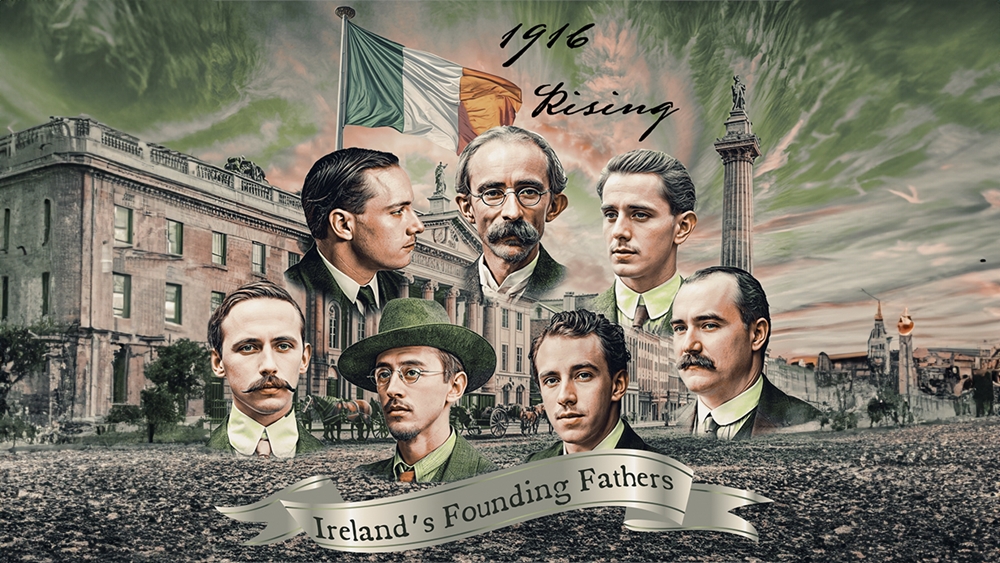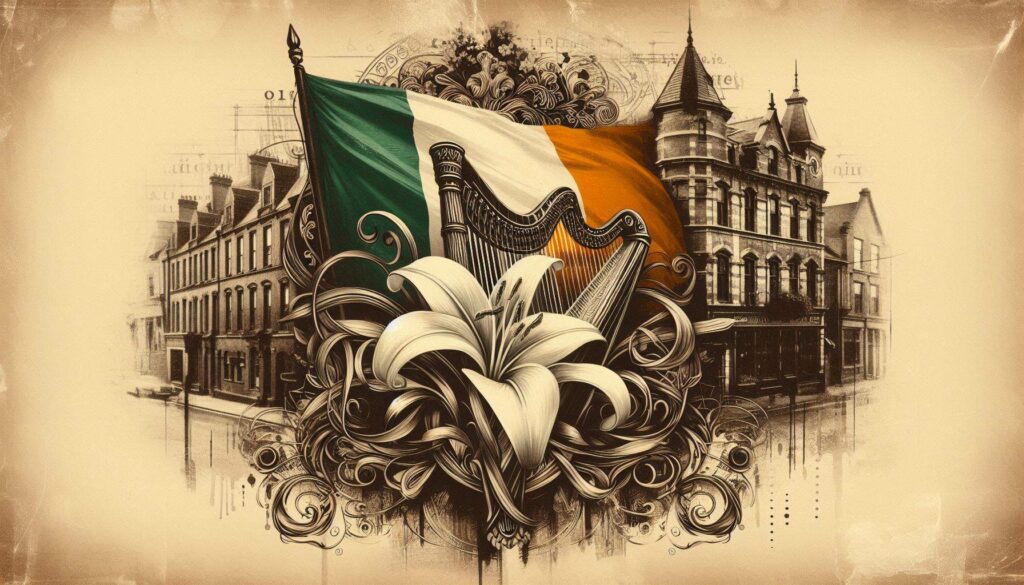Irish Republican Brotherhood in pictures
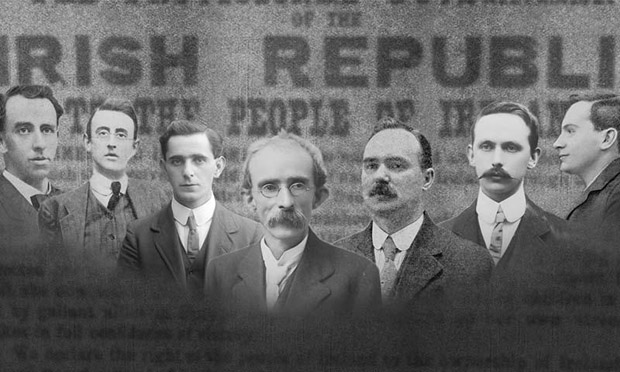
The IRB or the Fenians as they were commonly known are among the famous but also the most misunderstood organisations of modern Irish history. The common 19th century stereotype of a Fenian as portrayed by the British and their Irish controlled media is that of a beastly peasant with a stick of dynamite. Unfortunately, this tends to still shapes modern opinions to a certain degree.
The reality was and is very different. As an organisation the IRB attracted members from all groups in both Irish and indeed American society through the later 19th and early 20th century. The portraits below reveal there was not one type of IRB or Fenian member; there was many, from 19th century workers to farmers to professionals and well-presented men pictured with US presidents.
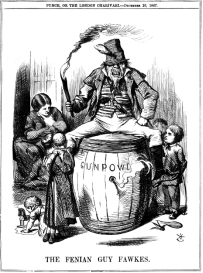
The IRB the Fenians and Clan na nGael
Founded 1858 the Irish Republican Brotherhood and its sister organisation in America Clan na nGael were committed to the idea that Ireland could only gain independence from the British Empire through both political means and armed struggle. The movement was known collectively as the Fenians. Politically they were, as the name suggests, republican but contrary to popular misconceptions early Fenians were secularists and clashed with the Catholic church through the 19th century.
While they would become famous for spectacular exploits such as the arms raid on Chester Castle or the audacious ‘Catalpha’ prison escape at Freemantle in Australia their greatest contribution was in terms of politics in Ireland.
As an organisation they were portrayed by the media as socially and economically vague. Despite that their members were the driving force behind most of the mid to late 19th century and early 20th century Irish politics.
They organised the first major mass campaign after the genocidal famine – the ‘Amnesty Association’ which campaigned for the release of Irish prisoners in England. The Amnesty Association organised a meeting of over 100,000 people in Cabra, Dublin in 1869. A decade later the IRB was key to the development of the ‘Land League’. By the early 20th century many key nationalist, republican and left-wing politicians in Ireland had been introduced to politics through the IRB.
In this context it is almost impossible to define an archetypical ‘Fenian’ as it eclectically attracted members from across the Irish spectrum from conservative nationalists to socialists. The IRB had among its member’s businessmen, MP’s, famous journalists and prominent trade unionist such as the first secretary of the of the Irish Trade Union Congress John Simmons.
IRB Portraits
Below are some IRB Faces who defined the organisation.
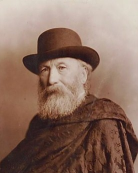
James Stephens
regarded as the founder of the IRB was heavily influenced by radical movements in the Paris during a period of exile there in the 1850’s. He died in 1901 in relative obscurity.
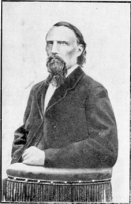
John O Mahony
along with James Stephens and John O Leary were the key founders of the IRB. O Mahony was perhaps the most famous of the early IRB generation. Born in 1816 he was active in the US, fought in the American civil war and organised Clan na nGael in America. He died in the US in 1877 but was returned to Ireland for burial.
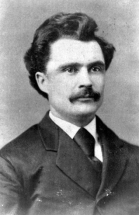
John Boyle O Reilly
like John O Mahony was active in the US as a journalist a poet and newspaper editor. He had been transported to Australia from Ireland for his IRB recruitment activities among British Military in Dublin in the 1860’s and for his role in the 1867 rising. He escaped from Australia to America and in 1875 he was the architect of the famous ‘Catalpha’ rescue of 6 Fenians prisoners from Freemantle prison on the west coast of Australia. A lifelong IRB man he died in 1890.
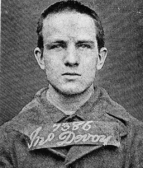
John Devoy’s
life spanned the key events of Irish politics in the later 19th and early 20th century. He was imprisoned and subsequently exiled for his activities in 1860’s. He remained active in America for years fundraising for the IRB especially leading up to the 1916 Rebellion returning to Ireland on a number of occasions. He was a highly influential figure and returned to Ireland under great pomp and ceremony in 1924. He died in 1928. Below he is pictured as a young man in the 1860’s.
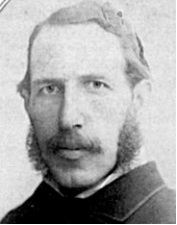
John O Connor Power
was born in 1846. In the his 20’s he became a member of the Supreme Council of the IRB. He was a key figure in helping to break the political orthodoxy of the IRB when he ran for MP in 1874, thereby breaking the rules of the organisation which was supposedly exclusively committed to armed struggle. He died in 1919.
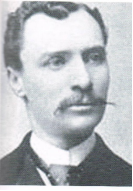
Thomas Brennan
born in 1854, was a prominent member of the IRB in Leinster in the 1870’s. Through his work as a clerk for the North Dublin City Milling Company’s he also spent time in Castlebar Co Mayo. There he gained great experience during the successful election campaign of John O Connor Power in 1874. He gained fame as a great orator and organiser during the land war. Imprisoned in 1881 for urging a crowd to boo a policeman he was disillusioned with 1882 Kilmainham treaty which saw him released and brought the first land war to an end. He immigrated to the US and became a successful business in Omaha. He died in 1915.
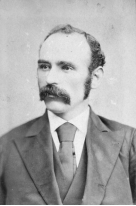
Michael Davitt
was perhaps one of the most famous IRB men. Born in 1846 his family emigrated to England. He joined the Fenians in 1865. He was imprisoned for gun running in England in 1870. He was freed in 1877. Two years later he became a key figure during the land war. He became disillusioned with the IRB leadership during the land war leaving the organisation sometime around 1880. He became a noted journalist and MP later in life. He died in 1906.
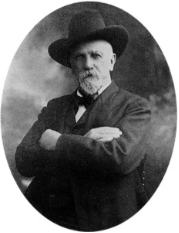
Jeremiah O Donovan Rossa
is most famous for the massive funeral he was afforded in 1915 where Patrick Pearse ushered the words “the fools, the fools, the fools; They have left us our Fenian dead”. In life he had been an active Fenian in the USA most of his life having been exiled along with Devoy.

Thomas Burke
While it may seem incredible, in 1867 this Tipperary man Thomas Burke was one of two Irish rebels who were the last people sentenced to death by hanging, drawing and quartering! While this brutal practice may be one of the most gruesome inventions of the medieval period it survived until 1870 before being struck off the law books.
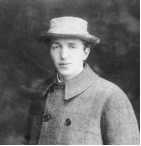
Bulmer Hobson
was born in 1883 into a Quaker family in Ulster. He was active in the I.R.B. in the early 20th century and was a member of the supreme council. His standing rapidly declined after he opposed the 1916 rising and tried to prevent it taking place. He died in 1969.
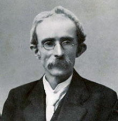
Tom Clarke
was born in 1857. Active as a Fenian he suffered horrendous abuse in British prisons which aged him prematurely. By the early 20th century he was a key figure in Irish republicanism the chief rebuilder of the IRB and a signatory to the 1916 proclamation. He was executed for his role in the rising.

Michael Collins
was the President of the Irish Republican Brotherhood prior to Independence although the organisation was no longer the force it had been in the 19th century particularly after the emergence of the IRA and Sinn Fein. His use or misuse of the IRB to pass the treaty was resented by many.
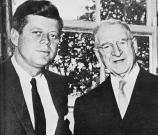
Eamon De Valera
was born in New York but in grew up in Ireland. He joined the IRB in 1915. He was the key figure in the Irish politics until the treaty in 1921. Having sided with the Anti Treaty forces his prominence declined only to return to mainstream politics in 1927 with a new party Fianna Fail. He became Taoiseach in 1932 and served several terms as both Taoiseach and president. He died in 1975. Below he is pictured with US president John F Kennedy in 1963.
The following is a partial list of prominent members of the Irish Republican Brotherhood, circa 1858-1916.
William O’Mara Allen
Thomas Ashe, President of the Irish Republican Brotherhood from 1916 to 1917
Michael Barrett
Piaras Béaslaí
James Bermingham
Gerald Boland
Harry Boland
James Boland
All of the Executed Leaders of the 1916 Rising as follows
Éamonn Ceannt: Born in Galway in 1881, prior to the Rising Ceannt was an employee of the Dublin Corporation. He was a co-founder of the Irish Volunteers, partaking in the successful Howth gun-running operation of 1914. His involvement in republican activities was complemented by his interest in Irish culture, specifically Irish language and history. He was also an accomplished Uileann Piper. As the commander of the Fourth Battalion of Irish Volunteers during the Rising, he took possession of the South Dublin Union, precursor to the modern-day St. James’s Hospital. He was executed on 8 May 1916.
Thomas James Clarke: Born on the Isle of Wight in 1857, Clarke’s father was a soldier in the British army. During his time in America as a young man, he joined Clann na nGael, later enduring fifteen years of penal servitude for his role in a bombing campaign in London, 1883-1898. In 1907, having returned from a second sojourn in America, his links with Clan na nGael in America copper-fastened his importance to the revolutionary movement in Ireland. He held the post of Treasurer to the Irish Republican Brotherhood, and was a member of the Supreme Council from 1915. The first signatory of the Proclamation of Independence through deference to his seniority, Clarke was with the group that occupied the G. P. O. He was executed on 3 May 1916.
James Connolly (1868-1916): Born in Edinburgh in 1868, Connolly was first introduced to Ireland as a member of the British Army. Despite returning to Scotland, the strong Irish presence in Edinburgh stimulated Connolly’s growing interest in Irish politics in the mid-1890s, leading to his emigration to Dublin in 1896 where he founded the ‘Irish Socialist Republican Party’. He spent much of the first decade of the twentieth century in America, he returned to Ireland to campaign for worker’s rights with James Larkin. A firm believer in the perils of sectarian division, Connolly campaigned tirelessly against religious bigotry. In 1913, Connolly was one of the founders of the Irish Citizen Army. During the Easter Rising he was appointed Commandant-General of the Dublin forces, leading the group that occupied the General Post Office. Unable to stand to during his execution due to wounds received during the Rising, Connolly was executed while sitting down on 12 May 1916. He was the last of the leaders to be executed.
Seán MacDiarmada: Born in 1884 in Leitrim, MacDiarmada emigrated to Glasgow in 1900, and from there to Belfast in 1902. A member of the Gaelic League, he was acquainted with Bulmer Hobson. He joined the Irish Republican Brotherhood in 1906 while still in Belfast, later transferring to Dublin in 1908 where he assumed managerial responsibility for the IRB newspaper Irish Freedom in 1910. Although MacDiarmada was afflicted with polio in 1912, he was appointed as a member of the provisional committee of Irish Volunteers from 1913, and was subsequently drafted onto the military committee of the IRB. in 1915. During the Rising MacDiarmada served in the G. P. O. He was executed on 12 May 1916.
Thomas MacDonagh: A native of Tipperary, born in 1878, MacDonagh spent the early part of his career as a teacher. He moved to Dublin to study, and was the first teacher on the staff at St. Enda’s, the school he helped to found with Patrick Pearse. MacDonagh was well versed in literature, his enthusiasm and erudition earning him a position in the English department at University College Dublin. His play ‘When the Dawn is Come’ was produced at the Abbey theatre. He was appointed director of training for the Irish Volunteers in 1914, later joining the IRB. MacDonagh was appointed to the IRB. military committee in 1916. He was commander of the Second Battalion of Volunteers that occupied Jacob’s biscuit factory and surrounding houses during the Rising. He was executed on 3 May 1916.
Padraig Pearse: Pearse was born in Dublin in 1879, becoming interested in Irish cultural matters in his teenage years. In 1898 Pearse became a member of the Executive Committee of the Gaelic League. He graduated from the Royal University in 1901 with a degree in Arts and Law. Pearse’s literary output was constant, and he published extensively in both Irish and English, becoming the editor of An Claidheamh Soluis, the newspaper of the Gaelic League. He was a keen believer in the value of education, and established two schools, Coláiste Éanna and Coláiste Íde, devoted to the education of Irish children through the Irish language. One of the founder members of the Irish Volunteers, and the author of the Proclamation of Independence, Pearse was present in the GPO. during the Rising, and was Commander in Chief of the Irish forces. He was executed on 3 May 1916.
Joseph Mary Plunkett: Born 1887 in Dublin, son of a papal count, Plunkett was initially educated in England, though he returned to Ireland and graduated from UCD. in 1909. After his graduation Plunkett spent two years travelling due to ill health, returning to Dublin in 1911. Plunkett shared MacDonagh’s enthusiasm for literature and was an editor of the Irish Review. Along with MacDonagh and Edward Martyn, he helped to establish an Irish national theatre. He joined the Irish Volunteers in 1913, subsequently gaining membership of the IRB. in 1914. Plunkett travelled to Germany to meet Roger Casement in 1915. During the planning of the Rising, Plunkett was appointed Director of Military Operations, with overall responsibility for military strategy. Plunkett was one of those who were stationed in the GPO. during the Rising. He married Grace Gifford while in Kilmainham Gaol following the surrender and was executed on 4 May 1916.
Other Executed Leaders:
Roger Casement: Born in 1864 in Dublin, Casement was knighted for his services to the British consulate. He campaigned tirelessly to expose the cruelty inflicted on native workers in the Belgian Congo in 1904, and again in Brazil from 1911-1912, causing an international sensation with his reportage. Casement had become a member of the Gaelic League in 1904, beginning at that time to write nationalist articles under the pseudonym ‘Seán Bhean Bhocht’. He retired from the British consular service in 1913, after which he joined the Irish Volunteers. Casement was despatched to Germany on account of his experience to raise an Irish Brigade from Irish prisoners of war. He was captured in Kerry in 1916 on Good Friday having returned to Ireland in a German U-Boat. Casement was imprisoned in Pentonville Gaol in London, where he was tried on charges of High Treason. He was hanged on 3 August 1916, the only leader of the Rising to be executed outside of Ireland.
Con Colbert: Born in 1888, Colbert was a native of Limerick. Prior to the Easter Rising he had been an active member of the republican movement, joining both Fianna Éireann and the Irish Volunteers. A dedicated pioneer, Colbert was known not to drink or smoke. As the captain of F Company of the Fourth Battalion, Colbert was in command at the Marrowbone Lane distillery when it was surrendered on Sunday, 30 April 1916. His execution took place on 8 May 1916.
Edward Daly: Born in Limerick in 1891, Daly’s family had a history of republican activity; his uncle John Daly had taken part in the rebellion of 1867. Edward Daly led the First Battalion during the Rising, which raided the Bridewell and Linenhall Barracks, eventually seizing control of the Four Courts. A close friend of Tom Clarke, their ties were made even stronger by the marriage of Clarke to Daly’s sister. Daly was executed on 4 May 1916.
Seán Heuston: Born in 1891, he was responsible for the organisation of Fianna Éireann in Limerick. Along with Con Colbert, Heuston was involved in the education of the schoolboys at Scoil Éanna, organising drill and musketry exercises. A section of the First Battalion of the Volunteers, under the leadership of Heuston, occupied the Mendicity Institute on south of the Liffey, holding out there for two days. He was executed on 8 May 1916. Heuston Railway station in Dublin is named after him.
Thomas Kent: Born in 1865, Kent was arrested at his home in Castlelyons, Co. Cork following a raid by the Royal Irish Constabulary on 22 April 1916, during which his brother Richard was fatally wounded. It had been his intention to travel to Dublin to participate in the Rising, but when the mobilisation order for the Irish Volunteers was cancelled on Easter Sunday he assumed that the Rising had been postponed, leading him to stay at home. He was executed at Cork Detention Barracks on 9 May 1916 following a court martial. In 1966 the railway station in Cork was renamed Kent Station in his honour.
John MacBride: Born in Mayo in 1865. Although he initially trained as a doctor, MacBride abandoned that profession in favour of work with a chemist. He travelled to America in 1896 to further the aims of the I. R. B., thereafter travelling to South Africa where he raised the Irish Transvaal Brigade during the Second Boer War. MacBride married the Irish nationalist Maude Gonne in 1903. He was not a member of the Irish Volunteers, but upon the beginning of the Rising he offered his services to Thomas MacDonagh, and was at Jacob’s biscuit factory when that post was surrendered on Sunday, 30 April 1916. He was executed on 5 May 1916.
Michael Mallin: A silk weaver by trade, Mallin was born in Dublin in 1874. Along with Countess Markievicz, he commanded a small contingent of the Irish Citizen Army, of which he was Chief of Staff, taking possession of St. Stephen’s Green and the Royal College of Surgeons. He was executed on 8 May 1916.
Michael O’Hanrahan: Born in Wexford in 1877. As a young man, O’Hanrahan showed great promise as a writer, becoming heavily involved in the promotion of the Irish language. He founded the first Carlow branch of the Gaelic League, and published two novels, A Swordsman of the Brigade and When the Norman Came. Like many of the other executed leaders, he joined the Irish Volunteers from their inception, and was second in command to Thomas MacDonagh at Jacob’s biscuit factory during the Rising, although this position was largely usurped by the arrival of John MacBride. His execution took place on 4 May 1916.
William Pearse: Born in 1881 in Dublin. The younger brother of Patrick, William shared his brother’s passion for an independent Ireland. He assisted Patrick in running St. Enda’s. The two brothers were extremely close, and fought alongside each other in the G. P. O. William was executed on 4 May 1916. Pearse railway station on Westland Row in Dublin was re-named in honour of the two brothers in 1966.
Hugh Brady (1896-1977), Paradise Ballynacally, Clare Brigade, sentenced to death by firing squad Killadysert, escaped
Éamonn Ceannt, aka Eamonn Kent
Thomas J. Clarke, Treasurer at the time of the Easter Rising
Cornelius Colbert
Michael Collins
James Connolly, joined prior to the Easter Rising
Patrick Curran, police informant
Ned Daly
Michael Davitt
Éamon de Valera
Seamus Deakin, President of the Irish Republican Brotherhood from 1913 to 1914
Timothy Deasy
Charles Guilfoyle Doran
Edward Duffy
Thomas McCarthy Fennell
William Goold
Bulmer Hobson
Martin Hogan, member of the Fenian Brotherhood who deserted from the British Army to join the Fenian uprising
Thomas J. Kelly, President of the Irish Republican Brotherhood during 1866 and 1867.
Luke Kennedy, joined 1898
Charles Joseph Kickham, President of the Irish Republican Brotherhood from 1873 to 1882
Michael Larkin
Diarmuid Lynch
Seán Mac Diarmada, aka Sean MacDermott, Secretary at the time of the Easter Rising
Thomas MacDonagh
Eamon Martin
Patrick McCartan
Denis McCullough, President of the Irish Republican Brotherhood from 1915 to 1916
Seán McGarry, President of the Irish Republican Brotherhood from 1917 until 1919
Liam Mellows
Denis Dowling Mulcahy
John Mulholland, President of the Irish Republican Brotherhood from 1910 to 1912
Neal O’Boyle, President of the Irish Republican Brotherhood from 1907 until 191.
James Francis Xavier O’Brien, President of the Irish Republican Brotherhood from around 1869 until 1872
John O’Connor, President of the Irish Republican Brotherhood from around 1882 to 1891
Jeremiah O’Donovan Rossa
John O’Leary, President of the Irish Republican Brotherhood from around 1891 to 1907
John O’Mahony
Gearoid O’Sullivan
Ted O’Sullivan
Charles Stewart Parnell
Patrick Pearse
Joseph Mary Plunkett
John O’Connor Power
James Stephens
James Wilson
B. Yeats
Related Posts
As we celebrate this season of renewal and hope on the IRBs 109th anniversary of 1916 we extend our warmest Easter greetings to all our members and […]
Iconic images define key moments in history such as DaVinci’s Last Supper. The iconic image of the seven signatories of the 1916 proclamation portrays the Irish Republican […]
The Irish Republican Brotherhood together with the Fenians was founded simultaneously in Ireland and the United States. It is the oldest political movement in Ireland. Since its foundation in […]

